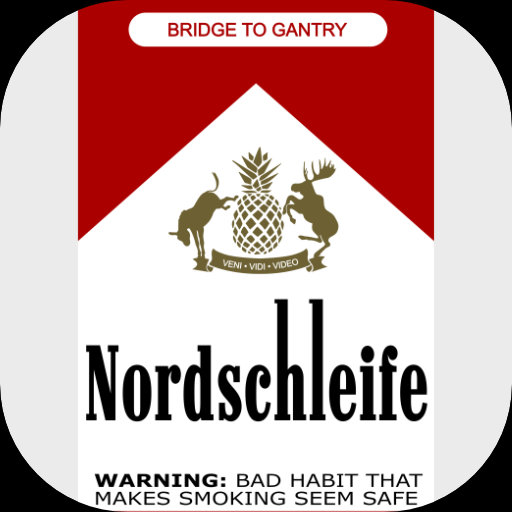The world is full of difficult and complicated problems, but the general public wants only to understand the simplest of answers. That might not be a problem for the latest breed of politicians, but for measuring Nürburgring laptimes it’s a bit of a pain.
Earlier this year the 2019 Megane RS Trophy-R officially set a laptime of 7m45.39s, beating the previous FWD record holder, the Honda Civic Type-R. The Honda did a 7m43.80s back in 2017.
This month I whooped with joy as the Jaguar Project 8 crossed the finish line at T13 to complete a 7m23.16s lap, beating the 7m21s laptime from 2017.
Obviously this makes no sense at face-value, and in a world where everybody reads a headline on facebook, but less than 5% actually click the link, you can almost forgive the manufacturers for massaging these confusing numbers back to some form of logical progression. But that’s wrong. And BTG is here to call it out.
ENTER BELLOF
When people talk about Nürburgring lap records, they really need to start in 1983. May 28th, to be precise. It’s a chilly morning, and qualifying for the ADAC 1000km is just about to start. Because of the ongoing construction work at the upcoming F1 circuit, the famous race is being held just on the Nordschleife, the northern loop. It’s an unusual arrangement, almost unprecedented. There’s just a hint of chaos in the air. A special, new, and very short, pitlane has been created in front of the T13 grandstand for this season, alongside a small start-finish straight. It’s an elegant enough, yet utterly temporary-feeling solution, and the total track length for the race is officially noted as 20,835mtrs. Rolling on to the track in the latest version of his Porsche 956K, he sets a blistering pace and finishes the timed session in pole position. His laptime is 6m11.13s. Little does anybody know that this will become the ultimate Nürburgring lap record.
THE T13 YEARS
The adjoining F1 circuit is completed the following year, and the T13 straight and pitlane fall into relative obscurity. Big races like the Nürburgring 24hour use the combined circuit. Pre-1982 that meant about 22,800mtrs. In 1984 it’s something around 25,000mtrs. On these events the T13 straight stands empty, an abandoned link road used only to park broken down racecars and the occasional recovery truck.
But during the week, this colourless concrete plateau finds a new meaning. By splitting the two circuits, the operators can effectively rent the Nordschleife and the F1 track separately. It’s great business. Both industry testing (the famous Ipool sessions) and Touristenfahrten (tourist driving) find a new home in T13 pitlane.
There’s a small problem though. The actual pitlane just isn’t big enough to accommodate the numbers of vehicles required by the industry test teams. And in public sessions, you pay per lap, no ‘staying out’ for multiple laps. So in both industry and public sessions, the 200mtrs of actual straightaway are speed restricted and gated. Vehicles park on it during the industry sessions, or they have their tickets checked in tourist drives. From the end of T13 back to the start of the pitlane, it’s about 20,600mtrs. A short lap of the Nordschleife.
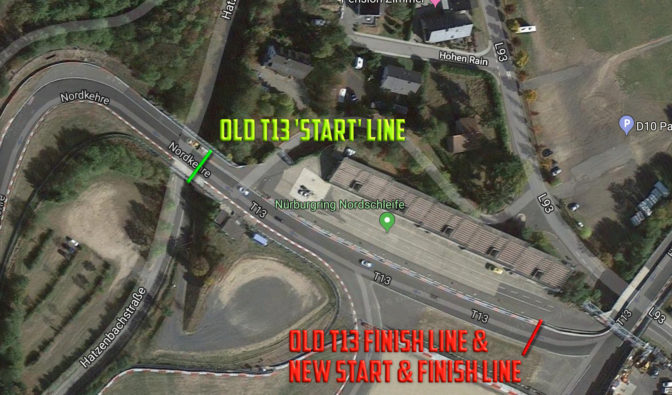
20 POINT 6
In 1995 the German car magazine Sport Auto announces the SportAuto Trophy. It’s a lap record challenge for road-legal cars and, in keeping with the many manufacturer times set in the previous 10 years, they also time their laps from the end of T13 back to the start of T13. In fact, many cars have set semi-official records in the last decade, Jaguar XJ220 and various Nissan GTRs, and they all did it WITHOUT using the T13 straightaway.
This ‘short’ Nordschleife-only lap, with its missing straightaway and ease-to-repeat-in-public-sessions becomes the de facto laptime layout for everybody. The Sport Auto Supertest is de rigeur reading for any in-the-know petrolhead.
NEW NORDSCHLEIFE ENTRANCE
By 1999 the industry sessions are picking up pace tremendously. Manufacturers flock to the Nürburgring. JDM performance cars and magazines begin to obsess over it. And touristenfahrten has to find its own home. Which it does, with a bar and grill, the Green Hell Diner, and its own carpark. The tourists are on a very short track now, only 19,1km long, and a long way from the secretive industry sessions.
THE DARK AGES
Confusion spreads. Laptimes from the 19,1km tourist course are confused and measured against the 20,6km Sport Auto laps, which are in turn measured against the true, full, 20,832mtr Nordschleife lap. Manufacturers claim laptimes with stripped-out and overboosted prototypes. The light gates are shifted ever further apart. Some manufacturers don’t even know about the gap on T13 and wonder why they’re 5 seconds too slow. WAIT! Was that a 20,6km lap, or a 20,5km lap? Did that car just leave the pitlane on slicks? Marketing companies run whole columns of GPS speed data through a 105% multiplier and attach it to a video converted from 24fps to 29.97fps. You name it, it happens. For nearly 30 years.
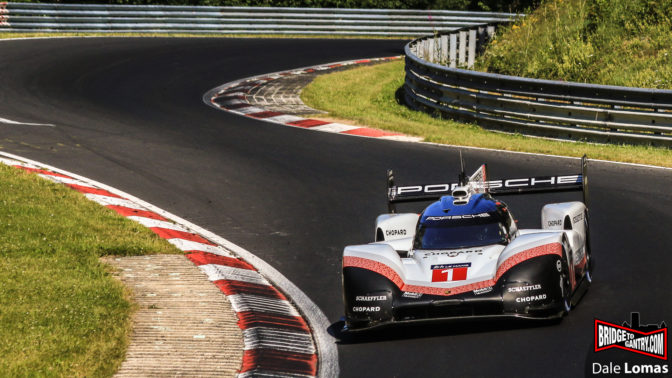
THE NEW REGIME
Now it’s 2019 and the Nürburgring operators have had enough. They’re going back to the start. To Bellof and 1983. To the full length of the Nürburgring Nordschleife. With a notary to check everything. With the cars open to scrutineering and categorised according to the law of the land. Nürburgring themselves commission the timing lights. If you just enforce the ‘short’ laptime better, you allow all the errors and misinformations of the past to be compared against the new, hopefully clean, laptimes. So it’s the FULL length that’s tested now. No arguments? Well…
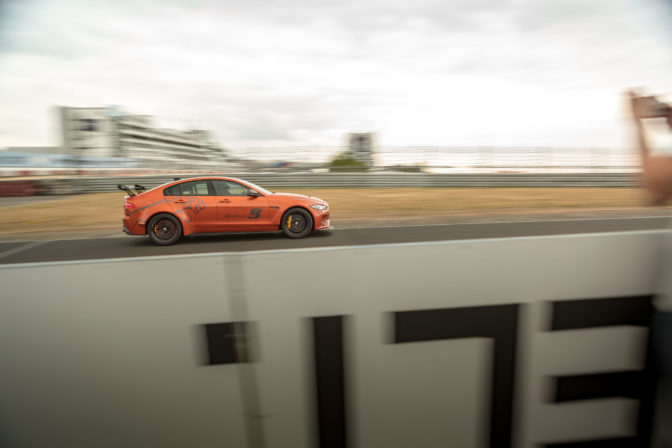
CONFUSION IS LURKING IN THE SHADOWS
Like the politics I mentioned at the start of this article, misinformation breeds in the absence of understanding. And manufacturers worry that the fans only know the laptimes, and not the lengths of the track they were measured on.
For example, Renault didn’t want to publish that they did a 7m45s lap, so they compared their laptime to the previous ‘short’ lap and put 7m40s on the title:
Jaguar just did the same with my beloved Project8. They felt they had to, and I agree. How on Earth could they claim any headlines with a new 7m23s lap time versus a 7m21s in 2017?
Hint; they can’t. They simply can’t. And they won’t. The audience wouldn’t understand it. If you’ve read this far, well done, I bet you’re representing less than 5% of car fans who saw this link.
Until the cars get significantly faster, and the manufacturers have the courage to quote the longer laptimes without worrying about previous times being ‘faster’, you can expect a bit of confusion and misinformation. But now YOU know the true lap distance. And so does the Nürburgring, and so does BTG.
And for these pages it has to be 20,832mtrs or GTFO. It’s a short laptime table, for now. But it can only get better.
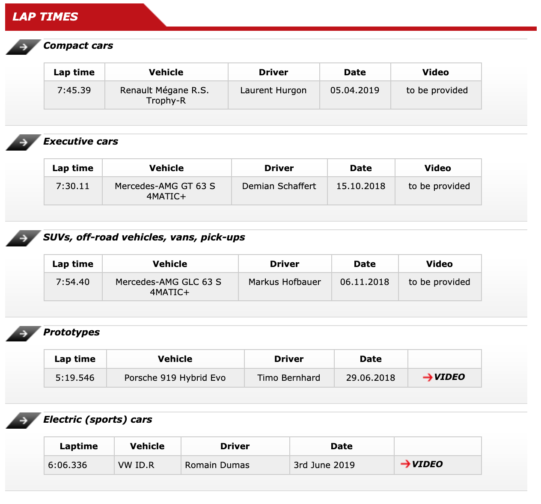 Click through to the official Nürburgring lap record list
Click through to the official Nürburgring lap record list
